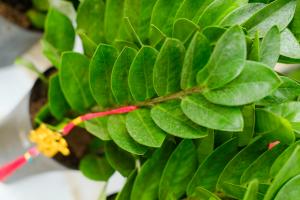How to Grow Small Water Plants
Small water plants, also known as aquatic plants, can add an appealing touch to any home or outdoor water feature. Their fascinating shapes and brilliant colors can be used to enhance natural ponds, decorative fountains, or fish tanks. Growing small water plants is simple if you follow these basic tips:
Choose the Right Plants
Before planting any aquatic plants, you need to select the right species based on the environment in which they will be growing. Some aquatic plants need more sunlight, while others prefer shade. Similarly, some small water plants, like duckweed, can survive in relatively poor water quality; meanwhile, others, like water lilies and lotus, need highly purified and aerated water. So, make sure to research the specific needs of each plant species you choose to make sure that they will flourish in your water feature.
Provide the Right Environment
Once you have selected the right water plants, it's time to create an ideal environment for them. The water temperature and pH levels must be monitored and adjusted as needed to ensure they are within the range the plants require. It's also essential to maintain a clean and healthy environment for your aquatic plants by removing dead leaves or other debris that can dirty the water and negatively impact the plant's growth. Finally, make sure your plants have enough space to grow; if they get too crowded, they will not thrive.
Planting Your Water Plants
When it comes to planting your aquatic plants, there are a few things to keep in mind. You'll need to choose the right soil, based on the specific needs of your plant. Some aquatic plants prefer marshy and muddy soil, while others need a more stable and firm soil base. When planting your small water plants, you'll need to place them in the water feature in such a way that they receive the correct amount of sunlight and water flow for optimal growth. Finally, give your plants sufficient time to adjust to their new environment before expecting them to blossom, and always be sure to water them regularly.
Fertilize Your Plants
If you want your small water plants to grow, then you need to provide them with nutrients. One of the best ways to do this is by fertilizing the soil or the water that they are planted in. Be sure to find the correct type of fertilizer for your specific aquatic plant species and follow the instructions for use; otherwise, your plants can be harmed by too much or too little fertilizer. It's also worth noting that some species of water plants might benefit from different types of fertilizer, so make sure you understand the unique needs of each species in your water feature.
Conclusion
Growing small water plants can be an enjoyable and rewarding experience. But success requires that you choose the right plants, provide them with a healthy environment, and give them proper attention and care. Whether you're creating a home water garden or cultivating an outdoor pond, following these tips will set you on the right path towards growing healthy and vibrant aquatic plants.

 how many times do yo...
how many times do yo... how many planted tre...
how many planted tre... how many pine trees ...
how many pine trees ... how many pecan trees...
how many pecan trees... how many plants comp...
how many plants comp... how many plants can ...
how many plants can ... how many plants and ...
how many plants and ... how many pepper plan...
how many pepper plan...































